Welcome back to the DataDab blog, where we explore all things SaaS marketing. Today, let's dive into a topic that's often overlooked yet holds enormous potential for those who dare to venture — gathering and analyzing competitive data.

The Why: Competitive Data and Its Importance
As Benjamin Franklin once said, "The only thing more expensive than education is ignorance." In the context of the SaaS market, ignoring the value of competitive data could be a costly mistake. Indeed, a Gartner study found that 80% of business professionals believed they had a deep understanding of their competitors. Yet, less than half had consistent competitive intelligence activities.
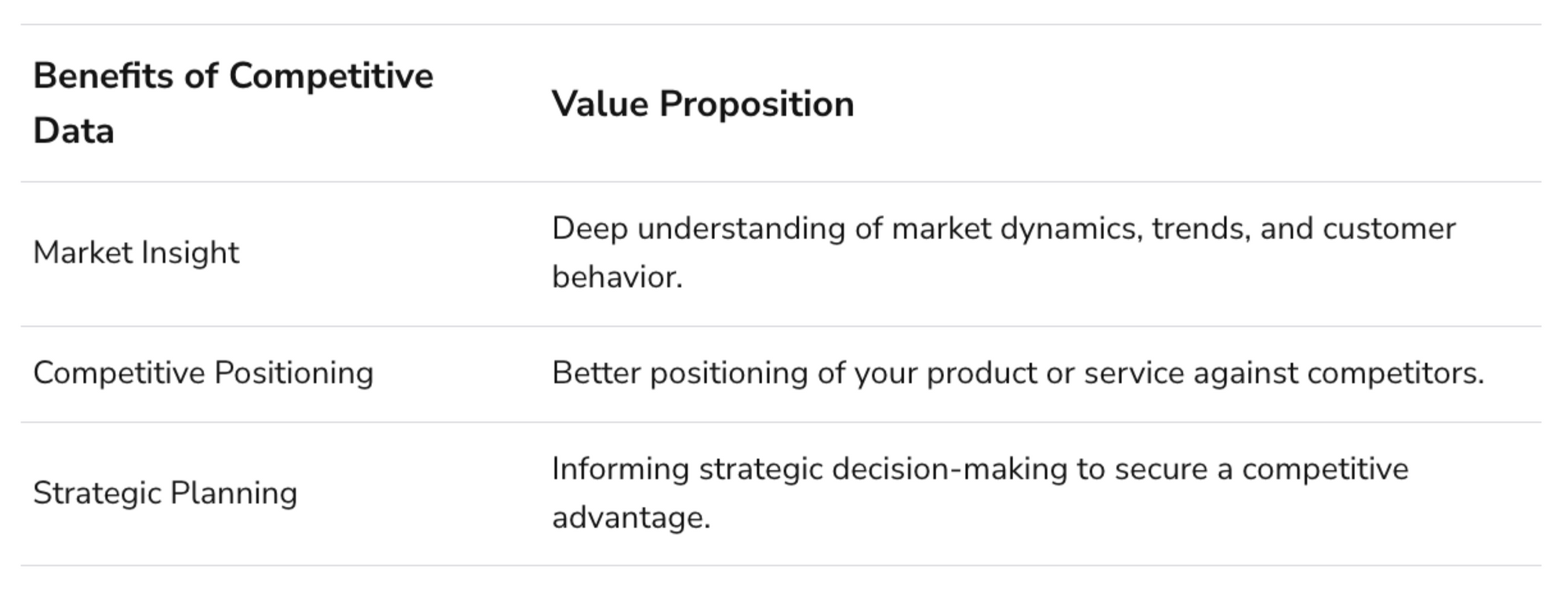
That's where competitive data analysis steps in. By tracking your rivals' activities, you can gain actionable insights into market trends, understand customer needs better, and determine what sets your product apart.

The How: Gathering Competitive Data
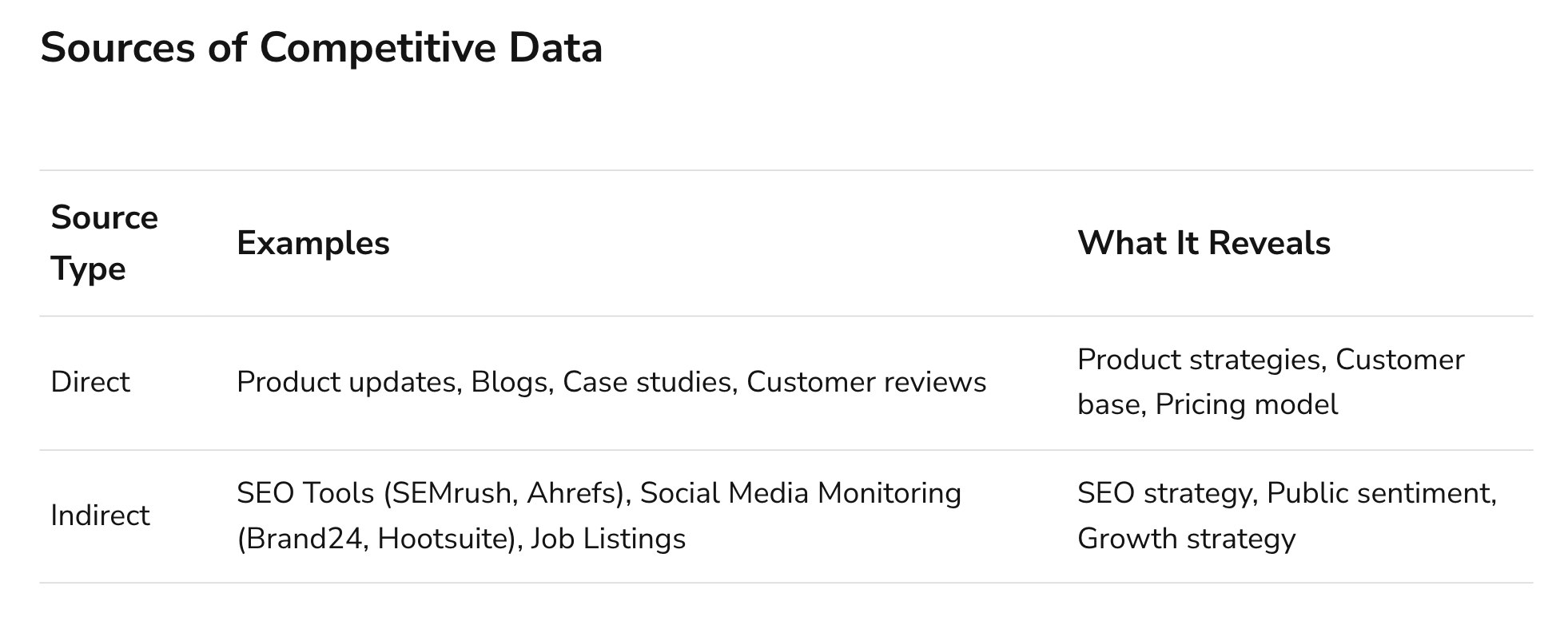
Direct Sources
Some of the most valuable data can be collected directly from your competitors:
Product Updates & Blogs: Keep an eye out for any new features, upgrades, or changes to your competitor's product. Their blog or newsletter is often a goldmine of information about their strategies and product roadmap.
Case Studies & Customer Reviews: These can provide information about their customer base, pricing model, and the challenges their product solves.
Indirect Sources
If your competitors don't openly share their information, fear not. There are a myriad of indirect sources available:
SEO Tools: Using tools like SEMrush and Ahrefs, you can track your competitors' keywords and backlinks, helping you understand their SEO strategy.
Social Media Monitoring: Tools like Brand24 and Hootsuite allow you to monitor social media mentions of your competitors, understand public sentiment, and identify potential product gaps.
Job Listings: A company's hiring activity can reveal a lot about its growth strategy and future direction.
Remember, the goal isn't to replicate your competitor's strategies but to understand their playbook so you can craft your own effectively.
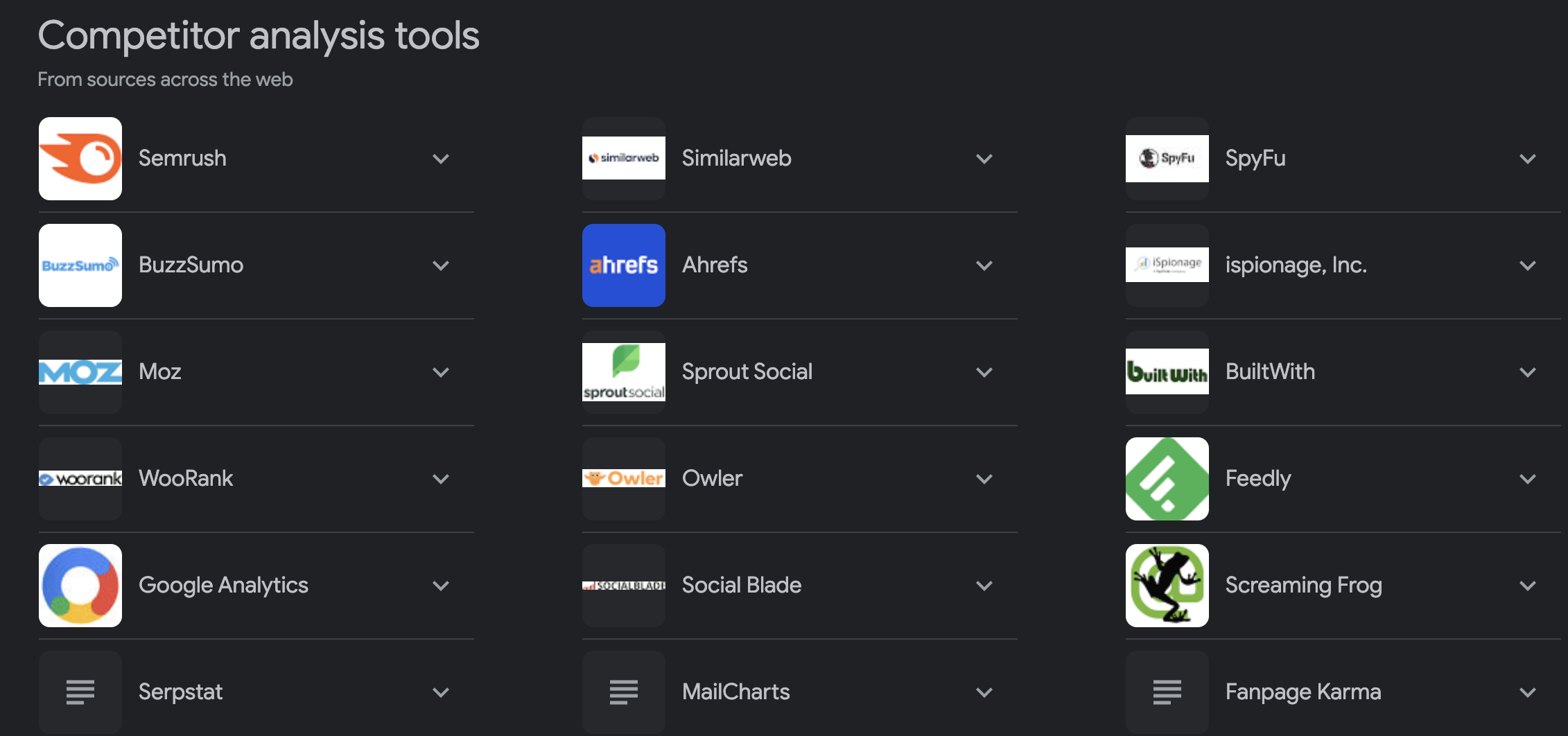
The Tech: Tools for Competitive Data Analysis
Once you've gathered the data, it's time to make sense of it all. Here are some tools to help you:
Crunchbase: A comprehensive platform for company insights, allowing you to track funding, acquisitions, and key players in the industry.
BuiltWith: A tool to understand the tech stack of your competitors, helping you determine their capabilities and identify potential weaknesses.
SimilarWeb: Provides web analytics for any website, giving you a clear view of your competitors' web traffic and user engagement.
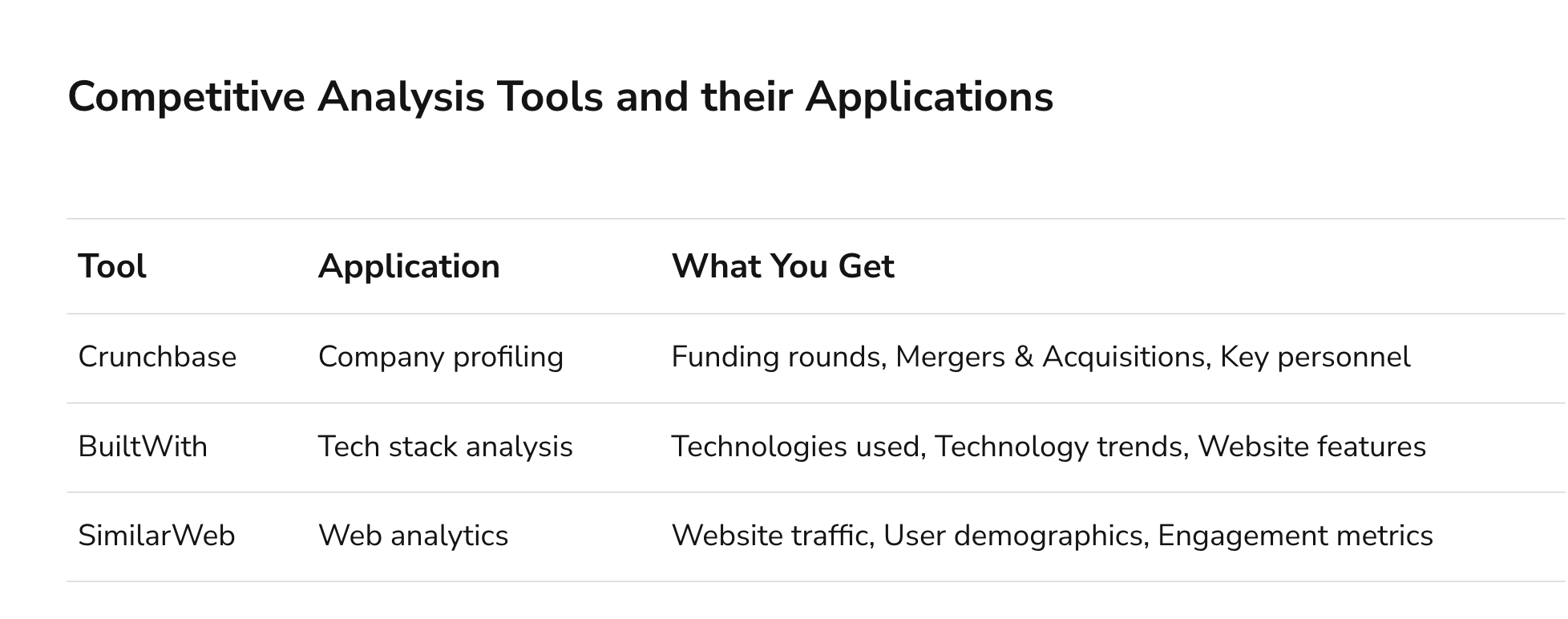
The Analysis: Interpreting Competitive Data
Once you have the data, how do you translate it into actionable insights? Here's a framework to help:
Identify Key Differentiators
What makes your product unique compared to your competitors? Identifying your USP (Unique Selling Proposition) is critical to standing out in a crowded market.
Understand Customer Needs
Use data to understand what problems your competitors are solving and what pain points remain. These insights can guide your product development and marketing strategies.
Evaluate the Competitive Landscape
With the data at your fingertips, construct a Competitive Landscape Matrix. This simple yet powerful tool helps visualize where your product stands in relation to your competitors.
By following this roadmap, you can start crafting data-driven strategies that resonate with your target market and outshine your competitors.
The Now: Putting It All into Practice
So, you've gathered your data, you've analyzed it, and now you're ready to take action. Here's how:
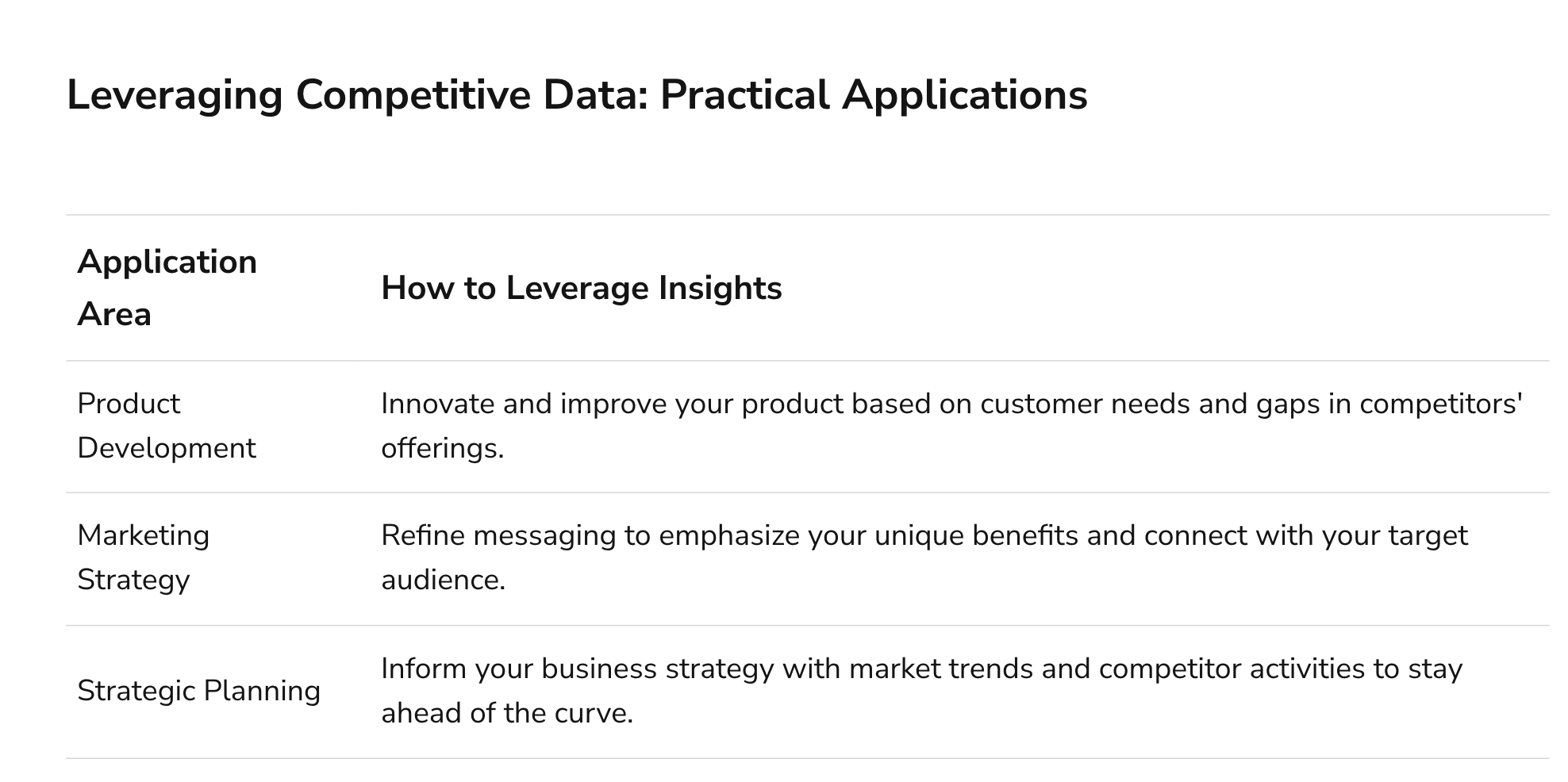
Update Your Marketing Strategy: Armed with a deep understanding of your competitors and market, fine-tune your messaging to highlight your unique benefits.
Innovate Your Product: Use the gaps in your competitor's offerings as inspiration for your next product updates.
Predict Future Trends: Leveraging insights from your competitive data can help you anticipate market shifts and prepare your product and strategy accordingly.
As we've seen, competitive data analysis isn't just a nice-to-have, it's a must-have. The data is out there; all it takes is a little curiosity, a little strategy, and a lot of analysis. So get out there, start gathering, and see where the data takes you. Remember, in the world of SaaS, knowledge isn't just power, it's competitive advantage.
FAQ
Why is competitive data important for my SaaS business?
Competitive data gives you a deep understanding of the market dynamics, competitor positioning, and customer behavior. This knowledge is crucial for defining your Unique Selling Proposition (USP), identifying opportunities for growth, and avoiding potential pitfalls. By effectively analyzing competitive data, you can make informed strategic decisions to gain a competitive edge.
Where can I gather competitive data from?
Competitive data can be gathered from both direct and indirect sources. Direct sources include your competitors' websites, blogs, press releases, and social media posts. Indirect sources include SEO analysis tools like SEMrush and Ahrefs, social listening tools like Brandwatch and Hootsuite, and job listing sites.
Which tools can I use to analyze competitive data?
There are several tools you can use to analyze competitive data:
- Crunchbase for insights on company funding, acquisitions, and key industry players.
- BuiltWith to understand your competitors' tech stack.
- SimilarWeb for insights into competitors' web traffic and user engagement.
What should I look for when interpreting competitive data?
When interpreting competitive data, look for trends, patterns, and anomalies. Evaluate your competitors' market positioning, product features, pricing models, and marketing strategies. Also, analyze customer reviews to understand what customers like or dislike about your competitors' products.
How can I use competitive data to improve my product?
Competitive data can reveal gaps in your competitors' offerings that your product could fill. Analyzing customer reviews and feedback can also highlight features or services that customers desire but aren't being provided. These insights can inform your product development process and help you deliver a product that meets customer needs better than your competitors.
Can competitive data influence my marketing strategy?
Absolutely. By understanding what messaging and marketing channels your competitors are using, you can identify effective strategies and potential areas for differentiation. Competitive data can also inform your content strategy, helping you create content that resonates with your target audience and stands out from your competitors.
How frequently should I gather and analyze competitive data?
Competitive data analysis should be an ongoing process as the market dynamics, customer needs, and competitors' strategies can change rapidly. A good practice is to review your competitive landscape quarterly, although some aspects may require more frequent monitoring, such as social media sentiment or SEO rankings.
What are some common pitfalls to avoid when analyzing competitive data?
One common pitfall is focusing too much on what your competitors are doing and losing sight of your customers' needs. While it's important to understand your competition, your primary focus should be on delivering value to your customers. Another pitfall is taking the data at face value without digging deeper. Always try to understand the "why" behind the data.
Can I use competitive data to predict future market trends?
While competitive data can't predict the future with certainty, it can help you identify trends and make educated predictions. By tracking your competitors' activities and the wider market, you can anticipate shifts in customer behavior, technology advancements, and industry changes.
Is there a risk in relying too heavily on competitive data?
While competitive data is incredibly valuable, it shouldn't be the only thing informing your business strategy. It's also important to listen to your customers, track industry trends, and follow your business intuition. Competitive data is just one piece of the puzzle, and the most successful strategies are often a mix of data-driven insights and innovative thinking.






